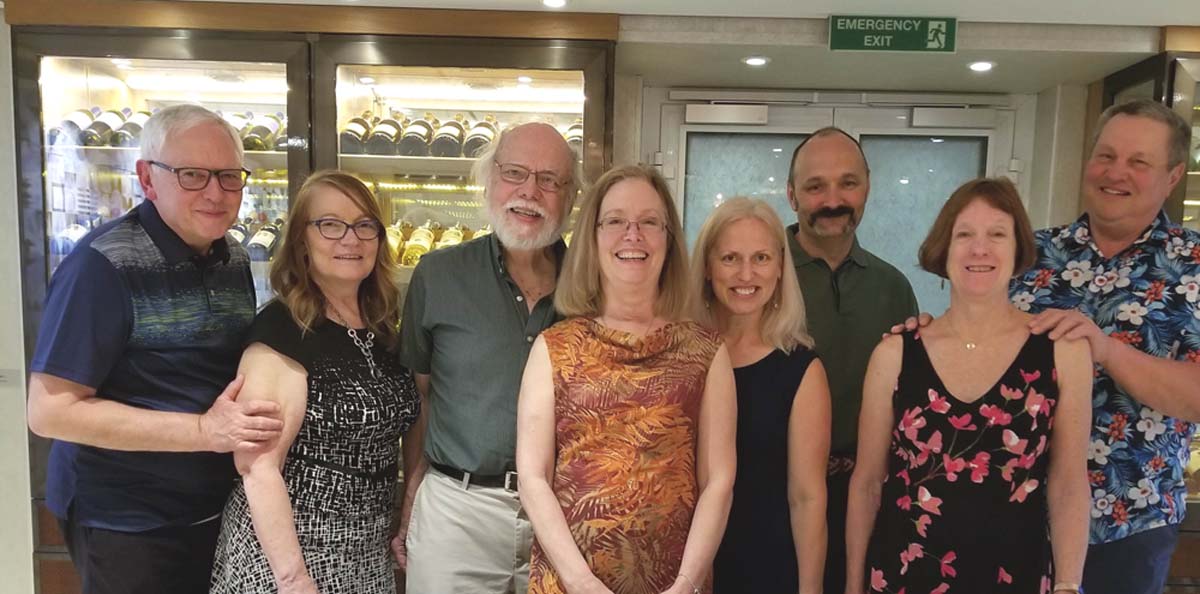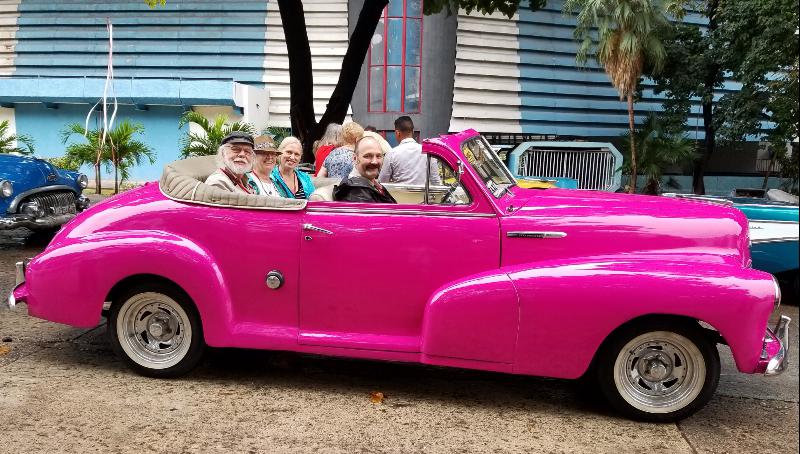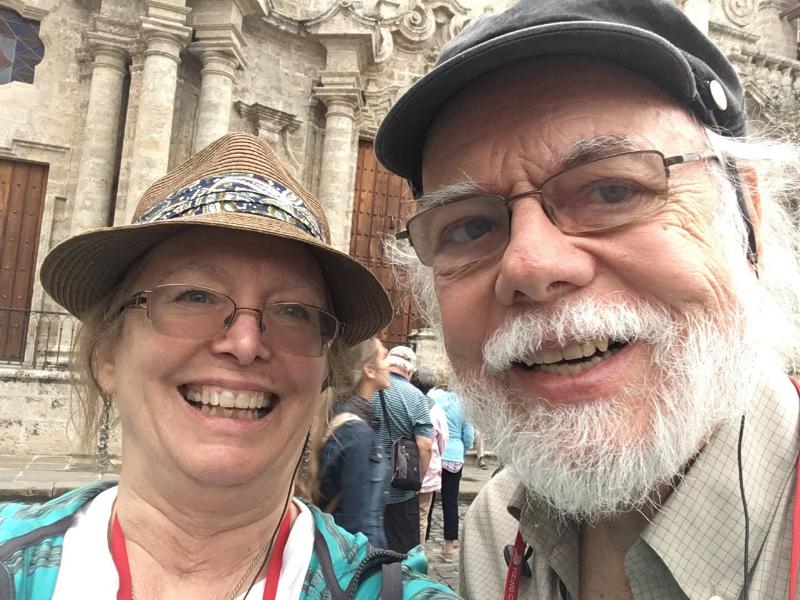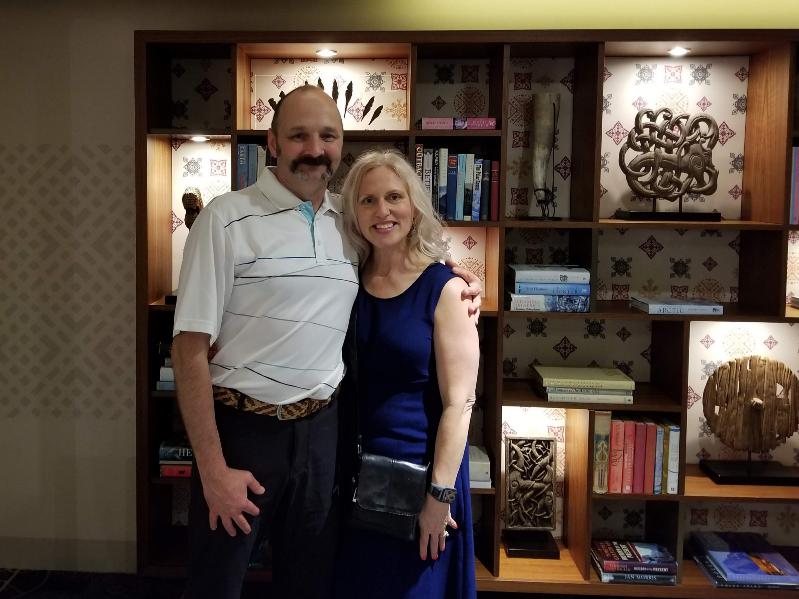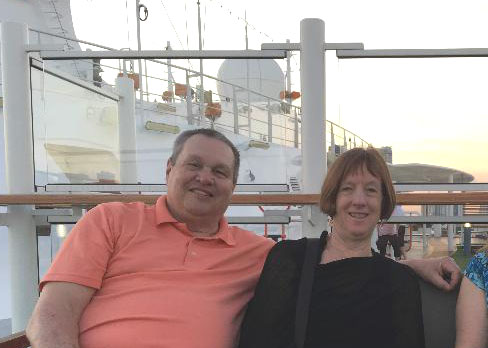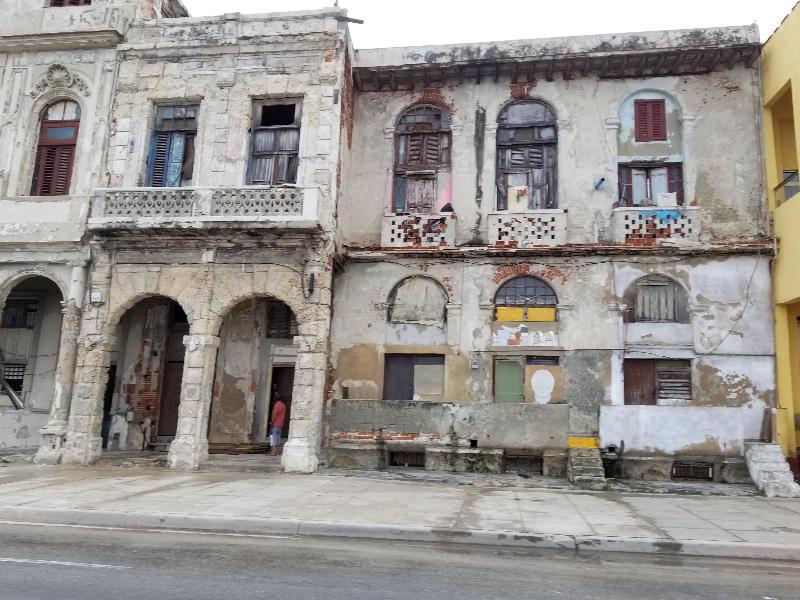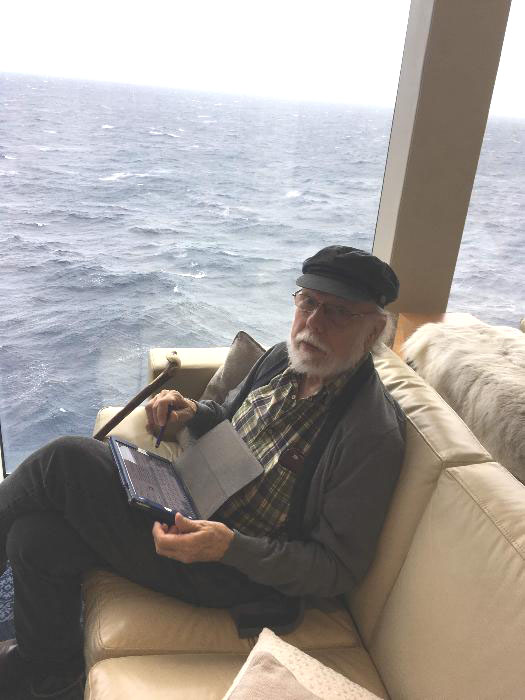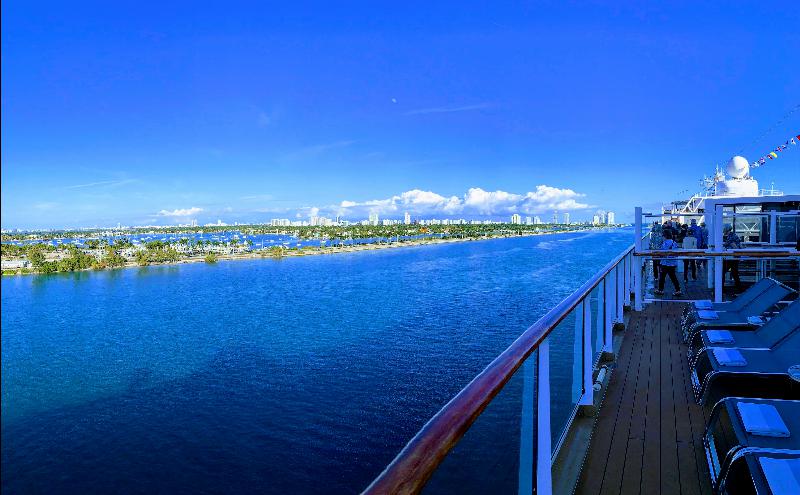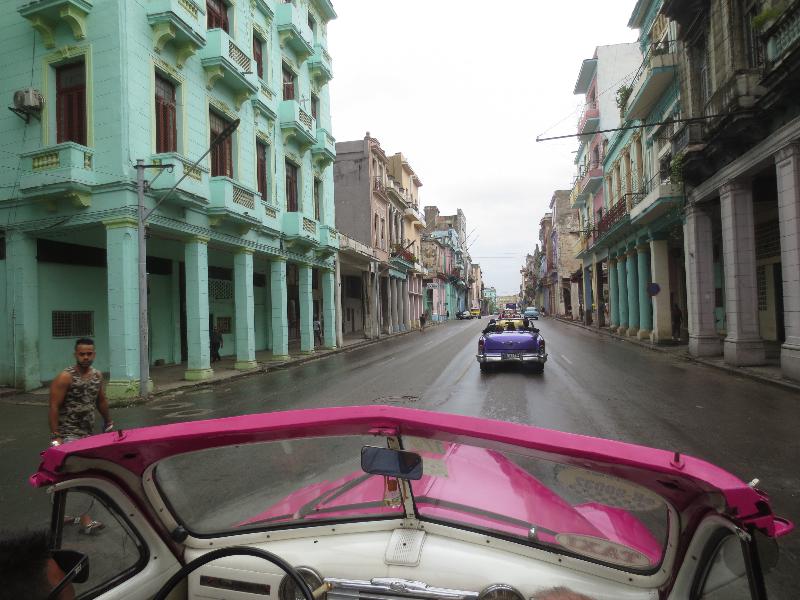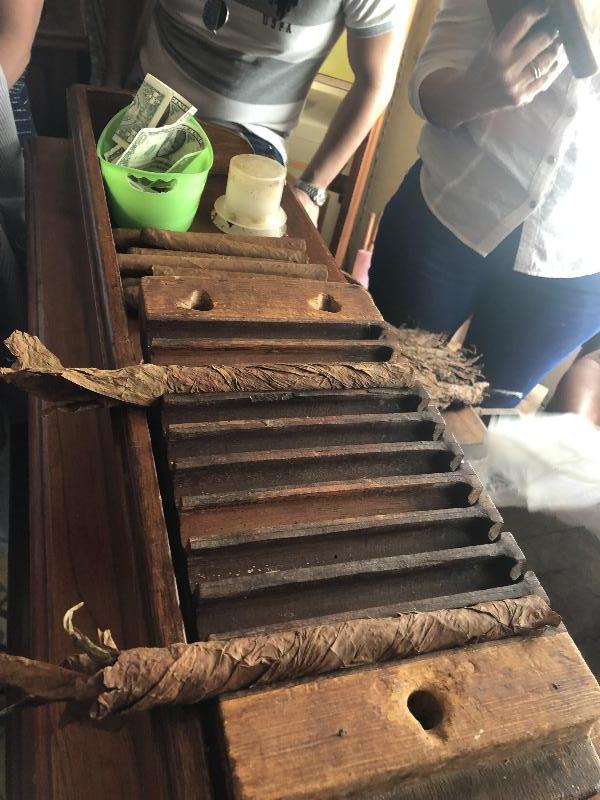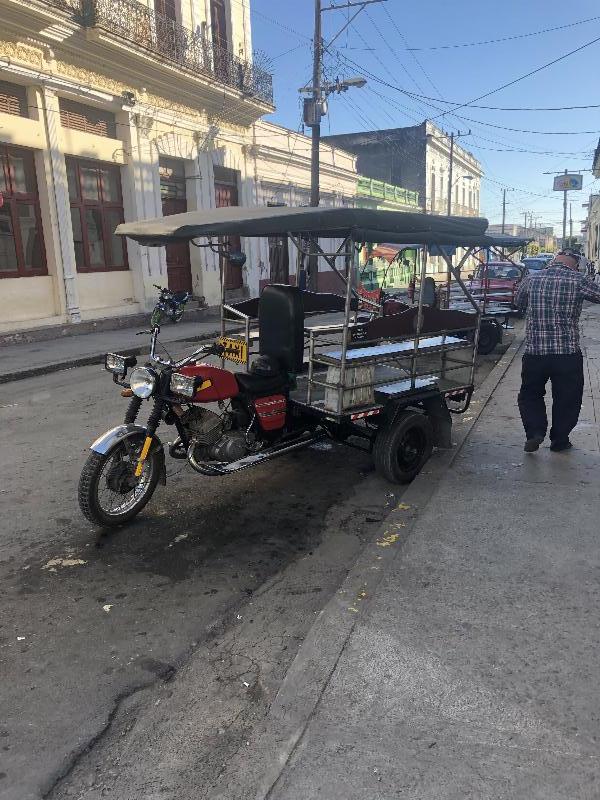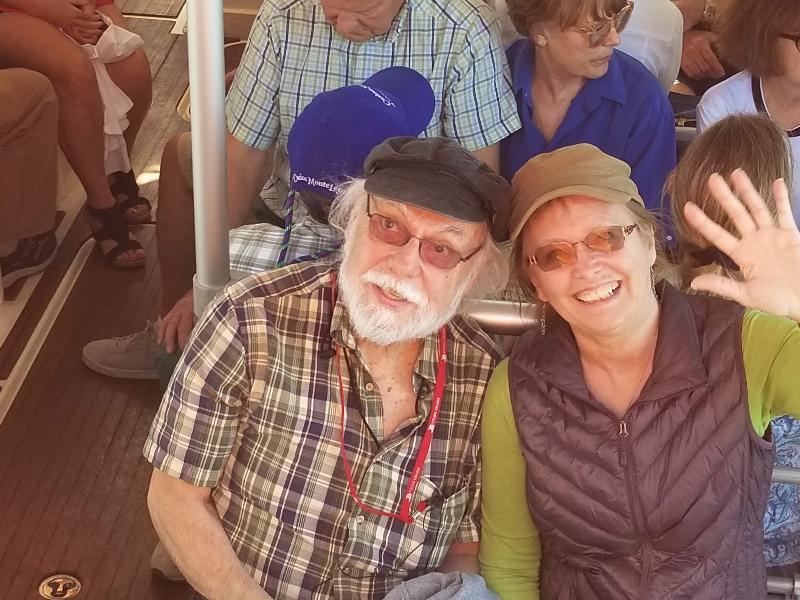Cuba 2019 For over 50 years my intentions were that my next trip would be to Cuba. 52 countries later, I finally stepped on the shores of an island only 90 miles from my own countries Shores. Tues-Wed Thursday And, soon the ship, ever so gently, swayed its way out to sea toward a world so close, yet so far from our own. Friday Saturday Sunday After arrival in Havana, lunch was served at a local paladar, or restaurant. Nestled into the suburbs, away from the bustle of the city’s more touristic historic center, our relaxing meal was served consisting of a stir fry like dish, rice and beans - and a dessert. One drink was provided complimentary, which included bottled water, wine, beer, or soft drinks. My advice: grab a bottle of water from the coach as you disembark and use your free drink for a soft drink or alcoholic beverage. Havana was cold and rainy that day. The cold wind caused waves to crash upon the walls built at the ocean front as we drove by. Spray from violent water thrashing against those walls created large sprays of freezing waters to find its way to our open air vehicles. Our ride ended where it began. We reentered our coaches and found our way downtown where we disembarked for a walking tour where one building might be crumbling. One might be under repair, while another still has been restored to its former glory. Of course, time was made for a quick, 30-minute stop at the Almacenes San Jose, or the San Jose Artisan’s Market. I’ll be honest: I’m not a shopper. I could have skipped this stop, especially considering that there’s really nothing terribly artisanal about this market, which features rows of dimly-lit stalls all selling the same wares. Worse, the market is one of the few places in Cuba that has adopted the same high-pressure, aggressive sales tactics found in other parts of the Caribbean. There’s nothing dangerous about it (the Cubans are really friendly, but they can be persistent as well), yet I just didn’t enjoy it. Back in our coach, we began the grueling and long journey back to our Viking Star ship in Cienfuegos. On board again, the most appropriate thing to do was to have a martini and go to bed. Another day is ahead. Monday Tuesday Disappointment day followed. Winds so high this day that our ship could not safely reach the shore. We were to take a tour of Santiago, thought to be the most beautiful city on the island. A judgment by our captain that it was just too dangerous to attempt transport to shore, was certainly the right choice. Wednesday Random blocks of prewar-style apartment buildings in Havana look as if they’d just been through an air raid — caved-in roofs, chipped plaster revealing brick walls, grass and weeds taking root atop. One wonders whether they’ve had any maintenance at all since La Revolucion took the city in 1959. Under state socialism there is essentially no private ownership of assets: buildings, cars, even horses and cattle. This inevitably reduces individual incentives to take good care of these things, yet it is impractical for a single entity (the government) to manage them all. Individuals forbidden to keep the fruits of their particular labors see little reward (and sometimes no opportunity) for spreading one’s wings, creating new enterprises, and new wealth for themselves and their country. State-operated media means journalists can’t fully and critically cover the government. Nor can citizens express discontent or organize for change. In exchange for all these sacrifices of freedom, Cubans enjoy universal education and universal health care, and a belief that all people are equal. If theirs were the only nation on Earth, things in Cuba might seem fine. Trouble is, many of those who haven’t been OK with this trade-off have found a way to leave, despite severe emigration restrictions. And those who have departed have tended to be the ones responsible for technological and economic development, which built the universally available medical and educational institutions. Innovators left Cuba for countries kinder to their dreams, while their home country’s policies froze society in time. Alongside horses clopping down city streets in Cuba, you see enough classic cars to think you’re at the Back to the ’50s Car Show at the Minnesota State Fairgrounds. I do love this retro aspect of Cuba, though. Cuba has widened the door for tourists in recent years to cope with economic struggle. But this flow of outside wealth disrupts the local economy as it comes ashore. Created as a collective society, Cuba’s freedom and material wealth suffer. But community and equality shine. Wealth disparity is minimal. National, cultural pride radiates. I’ve never felt safer in a developing nation; I never even heard a story about street crime. Homelessness is rare. Meanwhile, seeing Cuban totalitarianism challenged in 2018 also helped reveal that today there are new forces and possibilities creating new ways to potentially bring together individualism and community. Whether it’s the slowly growing cracks in the Cuban system or the turmoil in our own government, I’m left hopeful that the political struggles of modern times will be overcome through a billion people performing a billion small acts, working together in ways more efficient and beneficial to the world. |
Click on a picture for full view |
